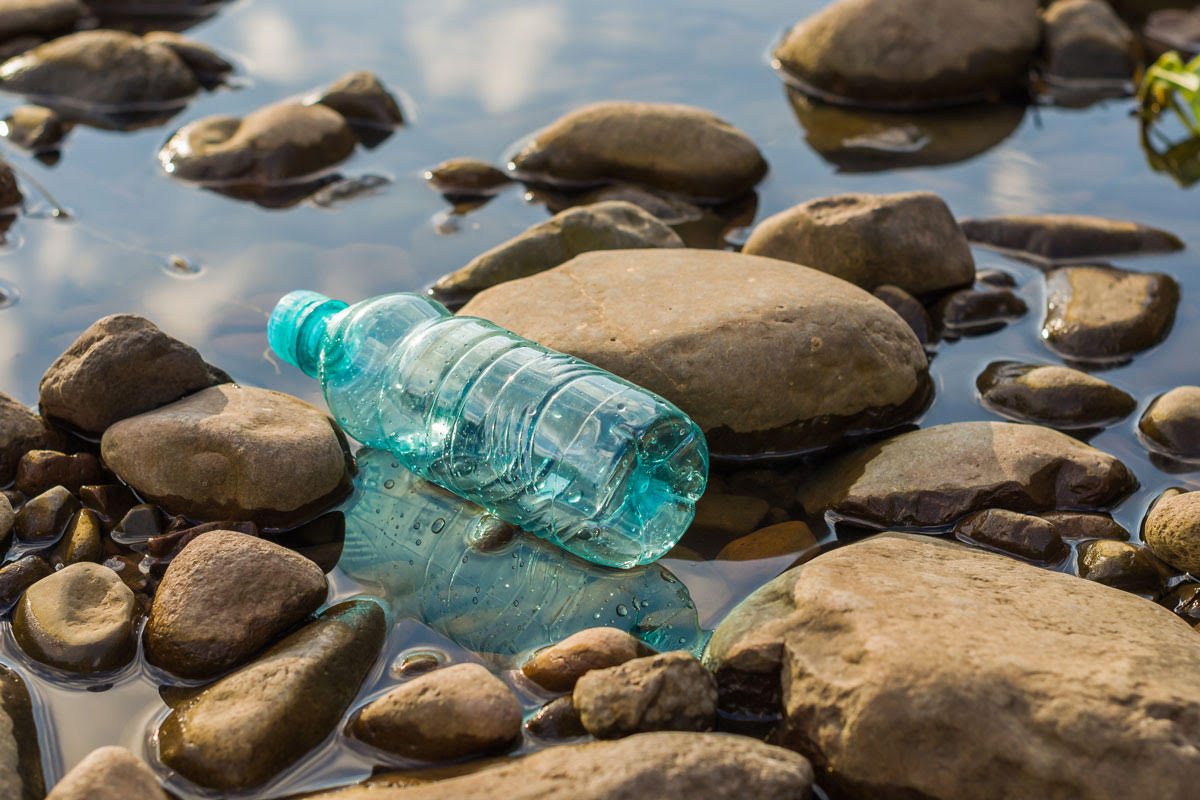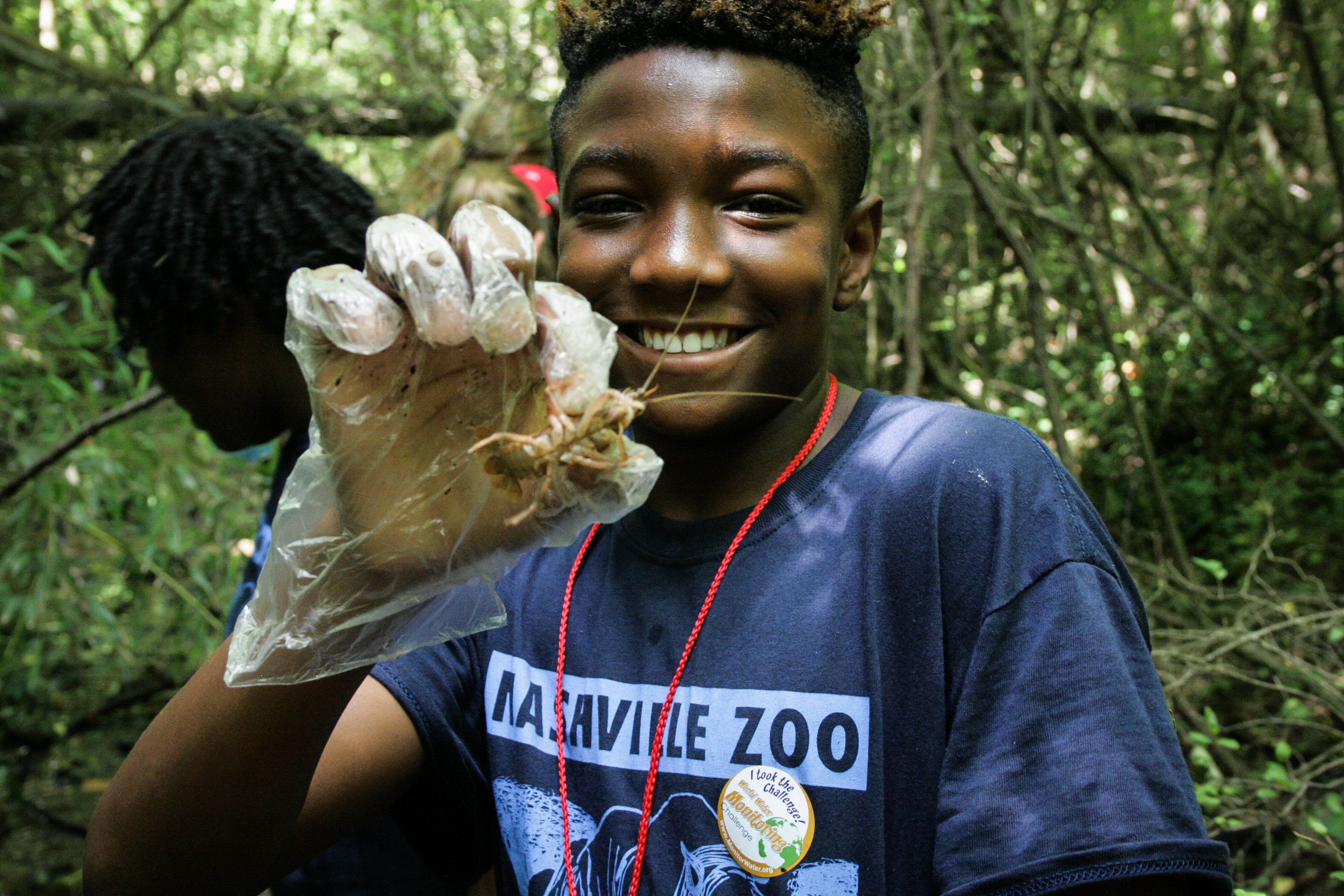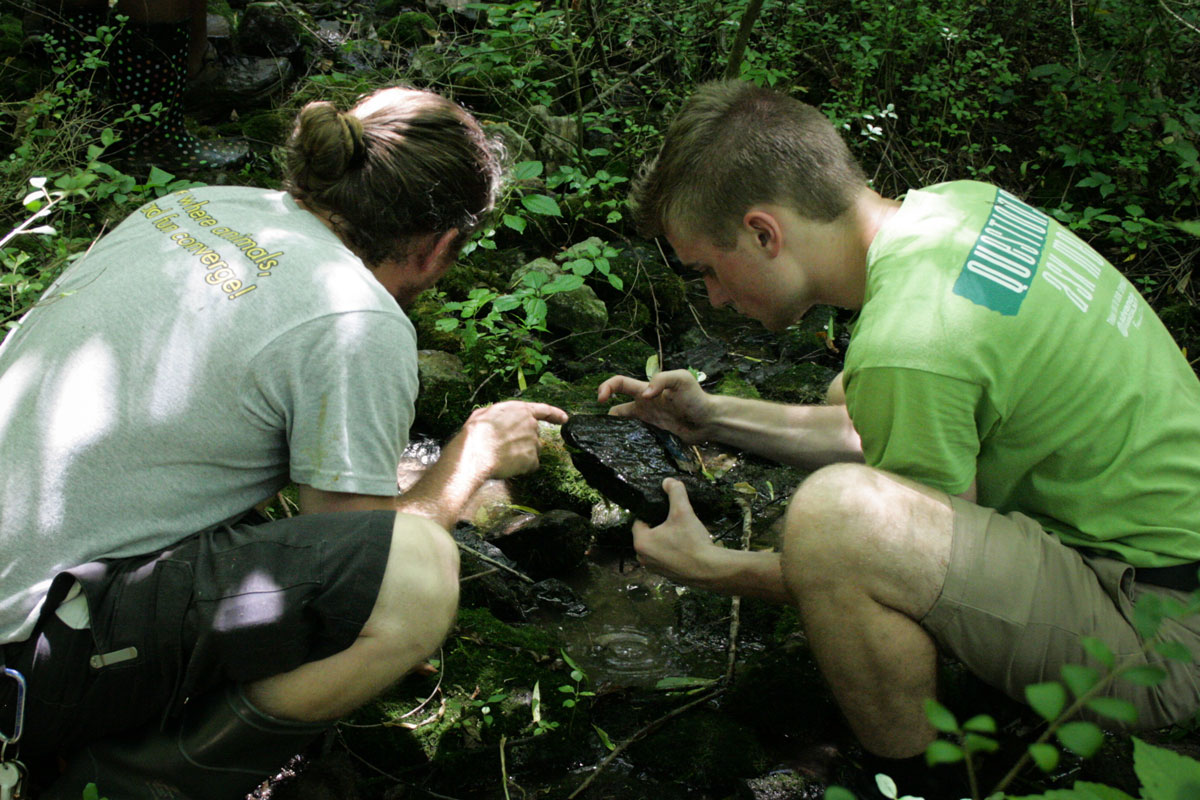Zoo staff have been monitoring Nashville crayfish populations for the U.S. Fish and Wildlife Service since 2013. In addition, staff consistently monitor the Zoo’s creek and surrounding land for ways to improve the conditions and eliminate pollution from entering the stream primarily from stormwater runoff.
About 10 years ago, Nashville Zoo received a grant in collaboration with the Cumberland River Compact and Civil & Environmental Consultants, Inc. to help protect the Zoo’s stream. The grant funded a large project that helped manage stormwater runoff from a 116-acre watershed, which included many paved areas that during heavy rain would send a lot of stormwater and silt into our creek. A native prairie habitat with berms was created to slow down stormwater runoff and allow it to infiltrate into the ground instead of rushing into the creek.
In addition to the native prairie area, 20 bio-retention ponds on the Zoo’s property were implemented to help prevent water from rushing into the stream during large rain events, reduce sediment entering the stream and decrease flooding along the heavily developed Mill Creek watershed.
In 2017, the Zoo team collaborated on another grant with the Cumberland River Compact and Tennessee Wildlife Resources Agency to remove two dams on Zoo grounds, transforming the stream into a free-flowing system and allowing aquatic wildlife, such as crayfish, small fish and other aquatic life to migrate upstream.
How You Can Help
Protecting our local waterways is vital. Even the smallest water system is important because all water eventually winds up in a large river, where cities acquire drinking water. You can help protect your local waterway by:
- Picking up trash and other pollution before it makes it into a creek or other waterway.
- Ensuring there is no exposed soil on your property and remembering that any pesticides or other pollutants that are left on the ground will be picked up with stormwater and will be deposited in a creek eventually.
- If you live along the stream, make sure not to cut down grasses or plants near the edge of the stream and to leave as many trees as possible. Those trees and native plants hold the soil and help filter stormwater runoff.






